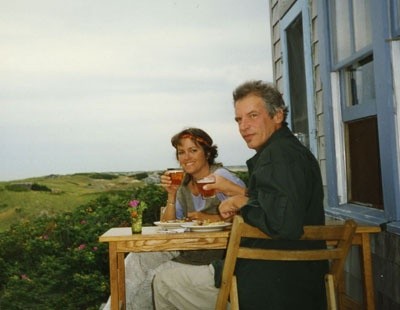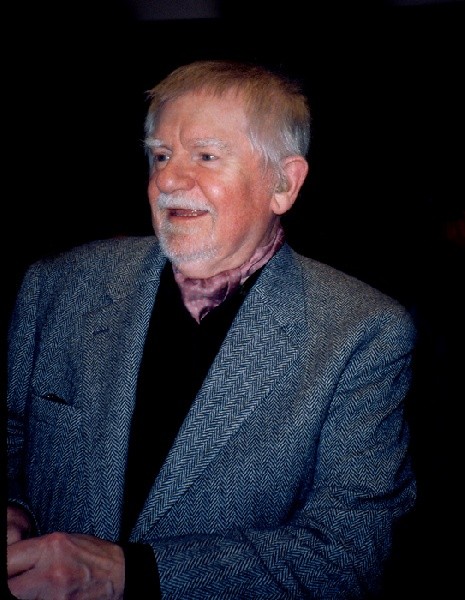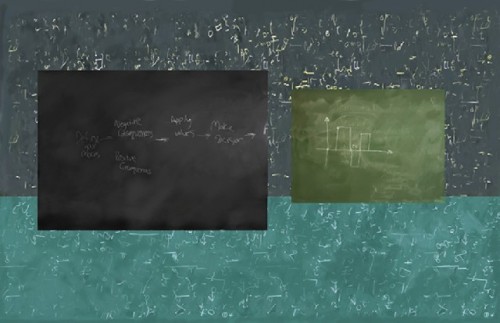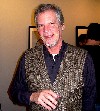Daniel Ranalli on Photography in Boston
Recalling Gallerist Carl Siembab
By: Daniel Ranalli - Mar 02, 2011
My relationship to photography and Boston goes back many years – I moved to Boston in large part because of the energy around photography – that was around 1970. There was MIT with their photography gallery (in the old armory building) and Minor White.
Carl Siembab’s gallery on Newbury Street was a revelation – shows of work by Weston, Strand, Sommer, Siskind, Callahan and so many masters. Polaroid was informed by Dr. Land’s enlightened philosophy that serious artists could offer insight into how cameras and film might be better engineered and was very generous to artists with their products. They were also building animportant collection.
It was a revelation to visit Carl’s (small, by today’s standards) gallery and see all that wonderful work – typically just covered by sheets of glass with L pins.
Carl had a reputation for being grumpy, but I think it was more complex than that. He had a hearing disability for one thing and he undoubtedly resented the lack of attention photography received during the 1950s through the early 70s – when things finally began to change. And once they did, he never seemed to know how to capitalize on it,being almost anti-business in his outlook.
For a number of years Carl taught a History of Photography course at the Boston Center for Adult Education – a course I took in the mid-1970s. We met in his 2nd floor gallery at 162 Newbury Street, sitting on the floor. Carl would lovingly take original prints by Edward Weston or Ansel Adams out of the gray archival boxes in his office area, passing the work around so that we could examine them while listening to Carl softly describe the differences between the artists’ aesthetic sensibilities or between platinum and gelatin silver prints.
It is hard to imagine today how marginalized photography was in the mid-1970s. There was virtually no literature–only a mere handful of books that seriously discussed the medium without recourse to shutter speeds and film type. There were almost no other commercial galleries showing photography.
Thankfully the Museum of Fine Arts had Cliff Ackley who was the Curator of Prints, Drawings and Photographs and he became a major supporter acquiring works for the MFA and doing shows there when he could. Unfortunately, the other museums in the area – except perhaps the Worcester and the Fogg (under Davis Pratt) did almost nothing. DeCordova had a director who despised photography and never exhibited it. The Rose Art Museum and the ICA largely ignored the medium.
In terms of the universities, of course RI School of Design had Harry Callahan and Aaron Siskind an hour away in Providence and the Museum School and Mass Art were just building out there departments so there was enormous possibility for photography. There was also the Boston Visual Artists Union in the 1970s, but few photographers were part of the organization, which had nearly one-thousand members at its peak.
A photography show was held at the original BVAU gallery in 1975 and I remember Chris Enos, Cary Wasserman, Roswell Angier and I all being in it.
I had my first solo showat Panopticon in 1974 when it first opened on Bay State Road in a basement space and also at the MIT Photography Gallery in 1977. I had shown Carl Siembab my portfolio in around 1973and he politely looked at the work – very undistinguished work I now realize, and he thanked me for bringing it in. It would be four years before I had the courage to do so again.
In 1978 I brought in a portfolio of new work – all photograms – very different than what most people thought of when they heard that term. Once again Carl looked at them – much more carefully – never saying a word as he removed them from the case and put them on his long table, looking carefully at each. When he finished, he looked at me and said “So, what can we do for you?” “How about an exhibition” I said –a bit in shock. I had my first solo show with the Carl Siembab Gallery in 1978. He represented me for about five years and I had three solo shows there. We became friends and I regularly visited him at the gallery. He would invite me to sit after I looked at the current exhibition – his desk blocked an open door frame and looked into the gallery, and I would pull up a straight backed chair next to him.
Carl inevitably had the Boston Globe open on the desk and he seemed to read every word, every day. If it was baseball season and the Red Sox were playing (there were far more day games then) a small ivory Bakelite radio would have the game softly on. We would chat for a while – about photography, art history, family life and whatever else came to mind.Carl closed the gallery a number of years later and moved to Ireland. In 1981, encouraged by Carl Chiarenza, the ICA in Boston did a show in honor of Carl’s support of photography. It included 15 photographers; I was very pleased to be included. It is considered one of the seminal historical photography shows in Boston. Carl Siembab passed away a few years ago.
In terms of Carl charging to look at portfolios, I think you are probably thinking of the sign over his desk that said Portfolio Reviews: $25. Carl was trying to earn a little side income by offering a critique to younger photographers. The gallery rarely sold much work and its finances were always worrisome. I don’t believe the sign was meant for serious artists who wished to have their work reviewed for a possible show.
In 1983 I started showing with Brent Sikkema at Vision Gallery a few blocks down Newbury Street, then later with Zoe Gallery when Brent moved to New York. I am now very happily represented by Gallery Kayafas in the Harrison Avenue/Thayer Street area. The galleries come and go I like to say, but a good artist lasts forever!




